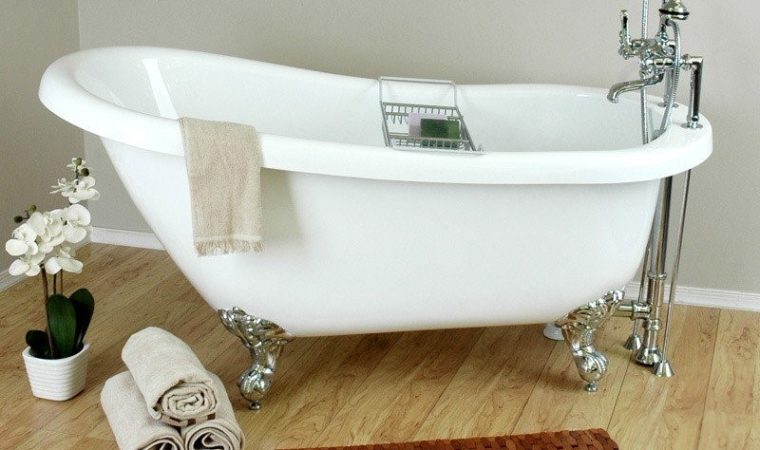How to Choose a Perfect Bathtub
- October 27, 2017
- Brenda Fisher
- 0 Comments

Are you going to be renovating your bathroom soon? Have you been asking yourself questions like “what’s the best tile leveling system?” because you want to do all the work by yourself? Are you still making the final touches to your bathroom’s new design? Well, the bathtub is the focal point in most bathrooms so you need to make sure your new tub will compliment your bathroom well.
With today’s busy schedules and never-ending lack of time, a shower is often the fastest way to get clean. On the other hand, taking a bath is more relaxing and comfortable – a luxury of its own, regardless of the type of the tub. A bathtub is more than just a place where we wash ourselves. It’s a place of meditation, creative thinking and romantic moments. Bathtub manufacturers understand this importance and are competing to offer products that enable maximum comfort and style in a single piece. Finally, a tub makes the whole bathroom décor more complete and the style you choose can dictate the bathroom setting. These are all reasons that it is so important to choose the right tub for you. Of course, when you find your perfect one, you’ll want to ensure that you look for a company who specializes in bathtub replacement, as can be found at https://www.thinkbordner.com/bathroom-remodeling/bathtub-replacement/.
Drop-in tubs
A drop-in tub consists of a shell only, which is then fitted inside a framed enclosure – a deck or an island that is finished to match your bathroom tiles or cabinets. Most jetted or whirlpool tubs have this design as it is suitable for concealing the additional pipes and the jet system. When looking for a drop-in tub, make sure you calculate the additional cost of building an enclosure. This type of tub is supported only from below.
Alcove tubs
This type of a tub has been a standard for some time, and many bathrooms were built with a tub-sized nook as a part of the design. This style usually makes only one side of the tub accessible and visible, while the other three sides are flush against the walls of the room. They are particularly relaxing and usually feature a wall-mounted shower and built-in shelves. Corner tubs are a variation of the alcove design that are fitted up against two corner walls to optimize the space, while their larger proportions are perfect for dual bathing.
Undermount tubs
Undermount tubs are a variation of drop-ins, but supported by a separate enclosure under the floor. In many cases, the flooring, such as tiles, or wood covers the lip of the tub, making it invisible. This tub design is often mounted against a wall or in a corner. Their design makes them much sleeker than regular drop-ins, and thus vastly popular in recent years.
Clawfoot tubs
This is an iconic design that borrows a lot of nostalgia for a grand Shakespearean-style soaking. Easily recognizable by their signature ‘clawed’ legs, these tubs are usually very deep. This feature makes them ideal for head and neck support. Clawfoot tubs are usually sought by homeowners who are looking to renovate into a vintage bathroom with a lot of style and charm.
Freestanding tubs
Another type that is easy to differentiate from the rest of the designs, a freestanding tub has many advantages. For starters, a freestanding tub is a beautifully sculpted bathing bowl that rests on a solid base or cradle. As they require no additional support or framing, they are incredibly versatile and offer more freedom. They can be installed virtually anywhere – in the centre of the bathroom or close to the window. As a result, the exterior design of a freestanding bath takes on an added importance, with manufacturers offering different styles to match every taste and décor.
Bath size and capacity
The standard tub measures 60 inches long and 30-32 inches wide, with the height and depth depending on a style and model. These dimensions are mostly reflected in drop-in and alcove styles but are also popular across the other bath styles. Choosing the right style is largely dependent on the size of the room. While alcove and undermount styles are mostly constrained by the dimensional conditions, corner tubs and freestanding designs allow for greater freedom. The bath capacity, on the other hand is more a question of personal preference than of the room size. Keep in mind that additional features such built-in seating, and head or armrests reduce the amount of water required and the number of people the bath can hold.
Such an amount of information can be too much for a renovator who has many other bathroom specifics to consider. However, the more you know, the smarter you’ll buy. If you think this is the hard part, remember that when it’s all over, you’ll get to enjoy your tub and leave all the renovation hassle behind.





